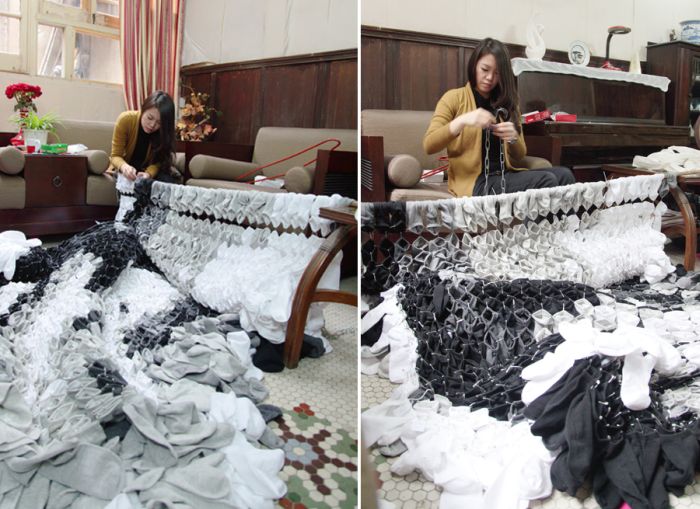|
|
Portrait Made Of Socks, Bamboo Sticks And Pins
|
The two general patterns for the growth of bamboo are "clumping" (sympodial) and "running" (monopodial). Clumping bamboo species tend to spread slowly, as the growth pattern of the rhizomes is to simply expand the root mass gradually, similar to ornamental grasses. "Running" bamboos, on the other hand, need to be taken care of in cultivation because of their potential for aggressive behavior. They spread mainly through their roots and/or rhizomes, which can spread widely underground and send up new culms to break through the surface. Running bamboo species are highly variable in their tendency to spread; this is related to both the species and the soil and climate conditions. Some can send out runners of several metres a year, while others can stay in the same general area for long periods. If neglected, over time they can cause problems by moving into adjacent areas.
Bamboos seldom and unpredictably flower, and the frequency of flowering varies greatly from species to species. Once flowering takes place, a plant will decline and often die entirely. Although there are always a few species of bamboo in flower at any given time, collectors desiring to grow specific bamboo typically obtain their plants as divisions of already-growing plants, rather than waiting for seeds to be produced.
Regular maintenance will indicate major growth directions and locations. Once the rhizomes are cut, they are typically removed; however, rhizomes take a number of months to mature, and an immature, severed rhizome will usually cease growing if left in-ground. If any bamboo shoots come up outside of the bamboo area afterwards, their presence indicates the precise location of the missed rhizome. The fibrous roots that radiate from the rhizomes do not produce more bamboo if they stay in the ground.
Bamboo growth can also be controlled by surrounding the plant or grove with a physical barrier. Typically, concrete and specially rolled HDPE plastic are the materials used to create the barrier, which is placed in a 60– to 90-cm-deep ditch around the planting, and angled out at the top to direct the rhizomes to the surface. (This is only possible if the barrier is installed in a straight line.) If the containment area is small, this method can be detrimental to ornamental bamboo, as the bamboo within can become rootbound and start to display the signs of any unhealthy containerized plant. In addition, rhizomes can escape over the top, or beneath the barrier if it is not deep enough. Strong rhizomes and tools can penetrate plastic barriers, so care must be taken. In small areas, regular maintenance may be the best method for controlling the running bamboos. Barriers and edging are unnecessary for clump-forming bamboos, although these may eventually need to have portions removed if they become too large.
|
|









